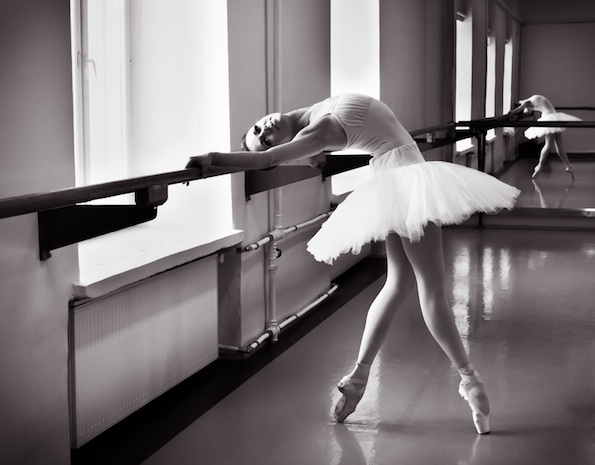By Rachel Kennedy of Dance Informa.
A Mirrorless Revelation
In 1994, I had the privilege of attending the American Dance Festival in Durham, North Carolina, USA. It was one of the greatest dance experiences of my life – being in the presence of so many incredible teachers and passionate dancers, and immersing myself in everything dance for six hot summer weeks.
I was living in London at the time and flew over to the states to attend. I arrived a bit worse for wear and didn’t fair so well in the auditions for the classes I was hoping to take. I really wanted to take the advanced ballet class but they said I wasn’t up to it. I disagreed.
When it came to signing up for classes, I walked up to the ballet teacher’s desk and convinced him to sign me up with the understanding that after one class if he didn’t think I could handle it then I would move to the intermediate class (I didn’t have to move, I stayed in that class and loved every minute of it!).
So the next day, I started advanced ballet at 8 a.m. The class was in a makeshift studio, made up of half of the cafeteria. Every morning, I peeled myself out of bed at 7:30 a.m., slammed down a banana and some water, and stumbled into class with the smell of toasted bagels and coffee drifting in through the partitions.
It was certainly different from every other dance studio I’d ever been in! The biggest difference, however, was the absence of mirrors. There were no mirrors at all, such a strange concept for me to get my head around. The room was also rectangular in shape, which became very confronting. At the end of an exercise, you would wind up dancing about a foot away from the wall.
At first it actually made me feel uncomfortable and uncertain not to have mirrors, not to be able to see what I was doing and check that I was performing the exercises correctly. Also, because of the size of the studio, mirrors would have helped to make the space feel much bigger. But I have to say, it didn’t take me long to get used to it and I found that it actually completely freed up my dancing.
I couldn’t believe how liberated I felt not looking in the mirror and judging myself constantly. Once I took that judgement away, I could dance with a proficiency and freedom I had never experienced before in a dance class. I felt the movement instead of just observing it. I really danced with my whole body and I can’t tell you how good that felt. My confidence soared and as a result there was a profound shift in the way I experienced dancing.
 Ballet School Blues
Ballet School Blues
My ballet school years were spent in front of a mirror and I would constantly compare myself to others in the class. I really got caught up in the reflection I thought I should be seeing in the mirror instead of working on and improving the one that was there.
Of course, I wasn’t the only one. There were some students who became completely enamoured and even slightly obsessed with their reflection. They spent more time looking at their reflection than they did listening and learning from the teacher.
Teaching the Feeling
Having been a Pilates instructor for the last 16 years, I have worked in various studios, some with mirrors and some without. The studio I owned in Sydney for six years had no mirrors.
Pilates is a very exacting, detailed, alignment and posture driven form of body conditioning so you would think that a mirror is a very useful tool. However, I find that I get the best results when clients aren’t caught up in their own image or their perception of what they see in the mirror.
As the instructor, we can be the mirror, providing the feedback our client’s need to move more efficiently without the effects of reflective self-criticism.
People only truly understand how to move their bodies when they feel it. Once you can feel it, your brain can start to reproduce it over and over again and you need never see it. In fact, a lot of my clients get surprised when they go home and look in the mirror and notice how much taller and more aligned they appear, all without having corrected themselves in front of a mirror.
There are definite benefits to having mirrors in the dance studio, don’t get me wrong. And we are all certainly capable of being critical of ourselves without the help of a mirror!
Mirrors can be useful tools to help dancers correct their placement and alignment and to help teachers demonstrate and observe at the same time. It is also nice to be able to observe how well we are moving or how we have improved our form, which can provide a sense of achievement and encourage us all on our dancing journey.
Flip the Image
I am not, for one moment, suggesting that we should abolish mirrors from our dance practice. But what I would like to propose to teachers, students and professionals alike is to turn your back on the mirrors once in a while.
Focus on the feeling of the movement and experience moving your body from the inside out.
If we can teach ourselves and our students to use the mirror as a tool to observe our bodies rather than judge them, I think we will open ourselves up to new possibilities and experience some of that freedom I felt back in the cafeteria studio in North Carolina all those years ago.
I think that’s something worth reflecting on, don’t you?
Photo by MariaMyInikova92.

















